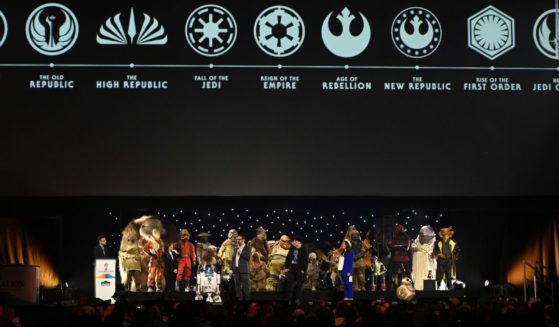1300-Year-Old Ancient Stone with Latin Writing and Christian Symbols Discovered
We all know that archeology isn’t as exciting as the “Indiana Jones” movies made it out to be.
Every ancient discovery can’t be accompanied by Nazis and daring escapes and torrid romances and forbidden relics and more Nazis.
Sometimes even the most interesting archaeology stems from (ahem) rather boring circumstances. Just consider what scientists found at Tintagel Castle, a Cornish ruin long associated with King Arthur.
For ages, archaeologists have searched for solid proof showing that Tintagel was actually Arthur’s birthplace.
And while they haven’t found that, they discovered something almost as interesting.
Examination of a windowsill in the 1,300-year-old castle turned up writing — quite fascinating writing. The ancient stone slab was scrawled with words in two different languages, namely Latin and Greek.
What’s more, the two-foot-long slab bore various Christian symbols, and the style of the letters resembled that of various illuminated manuscripts. The writing, though, was fragmented.
Archeologists were able to discern two names (“Tito” and “Budic”), the former of which was Latin, while the latter was Celtic. Other fragments included the word “son” and “two men.”
Some experts think this hints at a vast, multi-ethnic royal court, perhaps something not unlike one that would’ve produced King Arthur. English Heritage curator Win Scutt found the discovery particularly captivating.
“It’s incredible to think that 1,300 year ago, on this dramatic Cornish cliff top, someone was practicing their writing, using Latin phrases and Christian symbols,” he said. True enough, but do you know what I find interesting?
Note how Scutt used the phrase “practicing their writing.” It turns about that this discovery wasn’t a great work of art, but rather a very old bit of graffiti scratched into the rock by an industrious (or bored) individual.
Of course, those weren’t the only discoveries either. Archaeologists unearthed other exotic artifacts, including Turkish bowls, Spanish goblets, and oyster shells.
In the end, though, it’s funny to think that the most significant find wasn’t some useful implement, but a doodle done in someone’s free time. Perhaps not something that might catch Dr. Jones’ attention, yet who knows? There might be more to find.
Submit your story here, and subscribe to our best uplifting stories here.
Truth and Accuracy
We are committed to truth and accuracy in all of our journalism. Read our editorial standards.












